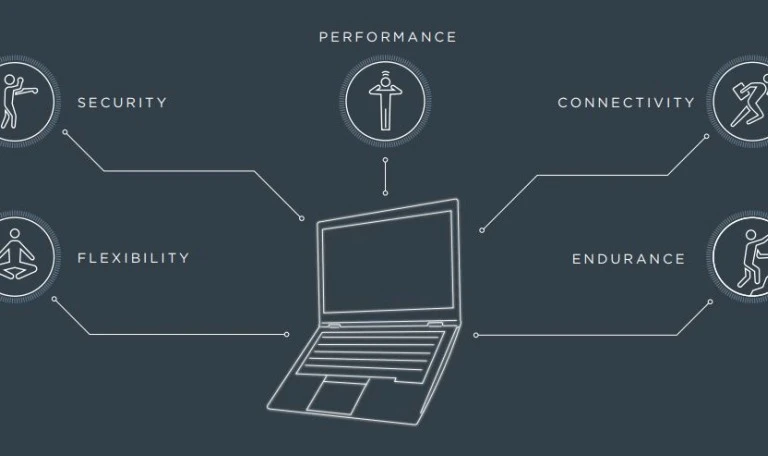In the next five years, the global bring your own device (BYOD) enterprise market is set to grow at a combined annual rate of 24 per cent, according to a research and markets report.
Encouraging employees to use their own devices is a cheap and efficient way of adding capacity to your businesses IT infrastructure, but security concerns remain. We track the trends, exploring the future for BYOD with three international IT change experts. The most recent Global BYOD and Enterprise Mobility Market 2017–2021 report claims that BYOD adoption is set to increase massively across businesses of all sizes and in all sectors. Security concerns are being overlooked as cash-strapped businesses seek to cope with reduced budgets by cutting IT inventory. It’s a positive move, with BYOD associated with increased productivity and efficiency.
The report describes how the recent growth of BYOD is the culmination of two complementary and interrelated developments: the prevalence of cheap and powerful mobile devices and the power of the cloud. As businesses of all sizes move from a tethered computing model to a flexible, cloud-powered model that embraces software-as-a-service, the report identifies a growing – if in some cases grudging – acceptance among CIOs that BYOD is here to stay.
“As more applications are being driven from the cloud, there’s an opportunity for BYOD to become more embedded within the way people work,” says Owen King, a senior consultant at global consultancy UnWork. Businesses now have the systems and tools to manage and monitor BYOD, making the process simpler, if not necessarily safer.
The way we work
Tethered IT systems may no longer provide the ideal solution, as the boundaries between work and home life become increasingly blurred. “Part of the increasing interest in BYOD is due to the drive by organisations to give their people more flexibility and choice, allowing employees to work from devices that work best for them,” King says.
Working alongside brands and businesses like Marks & Spencer and the BBC, King has observed the adoption of BYOD first-hand. “Employees increasingly expect to be able to use their own devices, and companies are responding to that demand,” he adds.
What has changed is that business are becoming more positive toward BYOD, facilitating and managing its introduction. DJ Oreb, vice president of client delivery at integrated mobile developers DMI has seen industry lead the shift. “It is the business that drives the BYOD effort in 90 per cent of the cases.” The reasons, he claims, are very simple. “Overall savings can be significant.”
Workplace change manager and founder of Simple Better HumanAndy Swann believes in the office of the future and that the flexibility of BYOD won’t be a choice, but an expectation. “Workers will expect to use the devices of their choice and seamlessly integrate between work and home use.”
For Swann, the shift to BYOD isn’t a choice, but more of an inevitability. “The increase in BYOD should be nothing more than an opportunity to support better ways of working for everyone,” he says. He is suggesting that BYOD could grow more quickly than projected, particularly as the begin their careers.
Risk and reward
BYOD isn’t without its dangers, says Oreb. He reels off a comprehensive list, “User acceptance, company costs, legal restrictions and court rulings are some of the biggest risks.”
Of all these, it’s network security that remains the biggest concern for CIOs weighing up the benefits of BYOD. If 2016 was the year of the mega-breach, journalists will be scanning the dictionary for superlatives to describe this year, as a seemingly never-ending list of hacks and attacks makes headlines – and staff are often to blame.
“A company’s data is only as secure as the weakest device it’s sitting on,” says King, repeating a familiar observation.
IBM, in its latest X-Force Threat Intelligence Index report, supports the statement, finding that insider attacks are now more prevalent than outsider attacks. Introducing any external device to your network brings with it the risk of corruption. IT professionals are shortsighted on the risk, with security firm Netwrix claiming up to a third of organisations “find it difficult to gain visibility to control shadow IT and BYOD.”
The growth of BYOD could be affected by the new due to come into force in early 2018. These new regulations will increase the level of control and scrutiny that business will need to have over their data. Unpicking the complexities around this will take time and dedication, adding a layer of complexity around an already confusing situation.
A strong and flexible BYOD policy is essential, and if you don’t have one, you need one now. “If they don’t, they’ll find that people start using their devices without appropriate safeguards or policies in place,” King cautions.
The growth of BYOD introduces new risks, but the challenge for CIOs today and in 2021 will be the same as it’s always been: to keep systems safe and secure. ![]()



